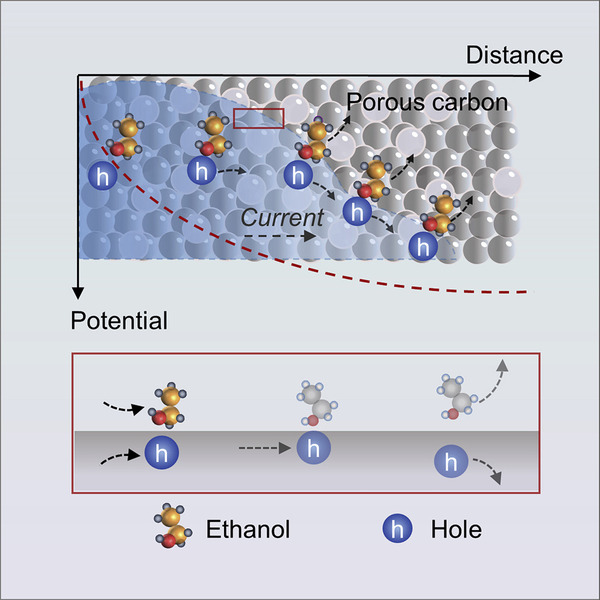Recently, the team of Academician Wanlin Guo of Nanjing University of Aeronautics and Astronautics used ethanol solvent to study the effect of evaporative power generation in carbon nanomaterials, and found that when ethanol evaporates on the surface of carbon nanomaterials, a continuous volt-level voltage can be generated, which is only generated in the capillary There is a millimeter-scale semi-wetted area at the front of the liquid film, and the flow potential caused by evaporation is almost negligible. On March 1, 2022, the study was published in the Joule of the Cell Press with the title "Evaporating Potential".

Evaporation is a process in which molecules are converted from liquid to gaseous state and spontaneously absorb heat from the environment. Using evaporation to convert low-quality thermal energy in the environment into electrical energy is a new type of negative heat emission power generation method. The phenomenon of evaporative power generation has been widely verified in various nanostructured materials, but the mechanism behind it is not clear, and it is often attributed to the traditional flow potential, that is, the flow of ions generated when a solution flows through a slit under a pressure gradient. electric potential. Since evaporation always induces liquid flow inside nanostructured materials, it is difficult to discern effects other than flow potential.
For the first time, the team of Guo Wanlin from Nanjing University of Aeronautics and Astronautics found that evaporation can generate volt-level voltage and significant current without significant flow potential. Further experiments and first-principles calculations show that this evaporation potential originates from the internal charge movement directly driven by the evaporation escape of polar ethanol molecules from the three-phase interface in carbon nanomaterials. In addition to ethanol, other polar solvents can also generate similar potentials. This potential directly generated by the evaporation of polar molecules on the surface of the material is called the evaporation potential. The discovery of evaporation potential provides a new idea for the development of hydrovoltaic energy technology using natural evaporation for energy conversion.
Compared with other power generation methods, evaporative power generation utilizes evaporation that is ubiquitous in nature, absorbs thermal energy in the environment and converts it into useful electrical energy without additional mechanical work input. It is a green new energy source with negative heat emissions. The discovery of evaporation potential is conducive to further improving the power density of evaporation devices. Large-scale installation of evaporation devices in oceans, lakes and other waters for power generation provides new ideas and approaches for alleviating the energy crisis and achieving carbon neutrality. Academician Wanlin Guo is the corresponding author, and teachers Jidong Li and Chung Shen are co-authors.

Link:https://doi.org/10.1016/j.joule.2022.02.002